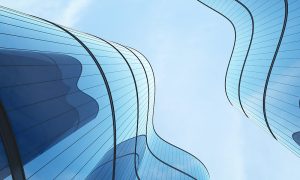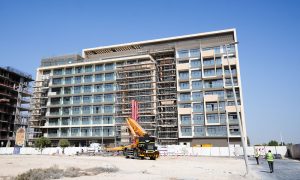FC Barcelona stadium to be showcased at Cityscape in Dubai
Japanese architects Nikken Sekkei to present designs for new Camp Nou for the first time in the Middle East

Japanese architectural firm Nikken Sekkei plans to showcase the design for the expanded and renovated Camp Nou, FC Barcelona’s iconic football stadium, at this year’s Cityscape Global in Dubai.
The existing Camp Nou, one of the largest stadiums in Europe, will be given a makeover at a cost of Euros 380 million ($425m), Nikken said in a statement. The proposal requirements include plans for complete refurbishment, a roof installation, and a capacity increase from 99,000 to 105,000 spectators.
Construction work is due to start in 2017 and will be complete by 2021, during which time the stadium will remain operational, Nikken added.
“It is a great honor to have been trusted with the opportunity to participate in the design of the New Camp Nou stadium, building on the legacy of the existing one. I hope fans and real estate professionals alike visiting Cityscape will want to come to our stand and take a look at a football stadium that is not only aesthetic in design, but functional, smart and sustainable,” said Tadao Kamei, president and CEO, Nikken Sekkei.

This is the first time that renderings and 500/1 physical model will be on show in the Middle East, the statement said, and visitors will have the chance to speak to members of Nikken Sekkei’s Dubai-based design team, who played a supporting role in the bid, as well as members of the central bid team.
The bidding process began in June 2015, with a total of 26 teams initially presenting bids, and in September 2015, the Espai Barça jury and technical committee shortlisted eight teams for the definitive tender for the new Camp Nou. Earlier this year, FC Barcelona announced that the Espai Barça jury had unanimously selected the design bid tendered by Nikken Sekkei + Pascual i Ausió Arquitectes, for the new Camp Nou. The jury felt the design stood out for being open, elegant, serene and democratic.
“We were told that our design was also noted for its relationship with the environment, providing depth, creating shadows and presenting a very subtle attempt to intervene in the environment to facilitate circulation and achieve diverse urban usage,” said Fadi Jabri, regional director and executive officer, Nikken Sekkei.
The jury claimed that it was a unique solution, reproducing the characteristic vision of the grandstand and canopy from the inside out, a silent and powerful tribute to the stadium designed by Francesc Mitjans, Josep Soteras and Lorenzo García Barbón in 1957.























